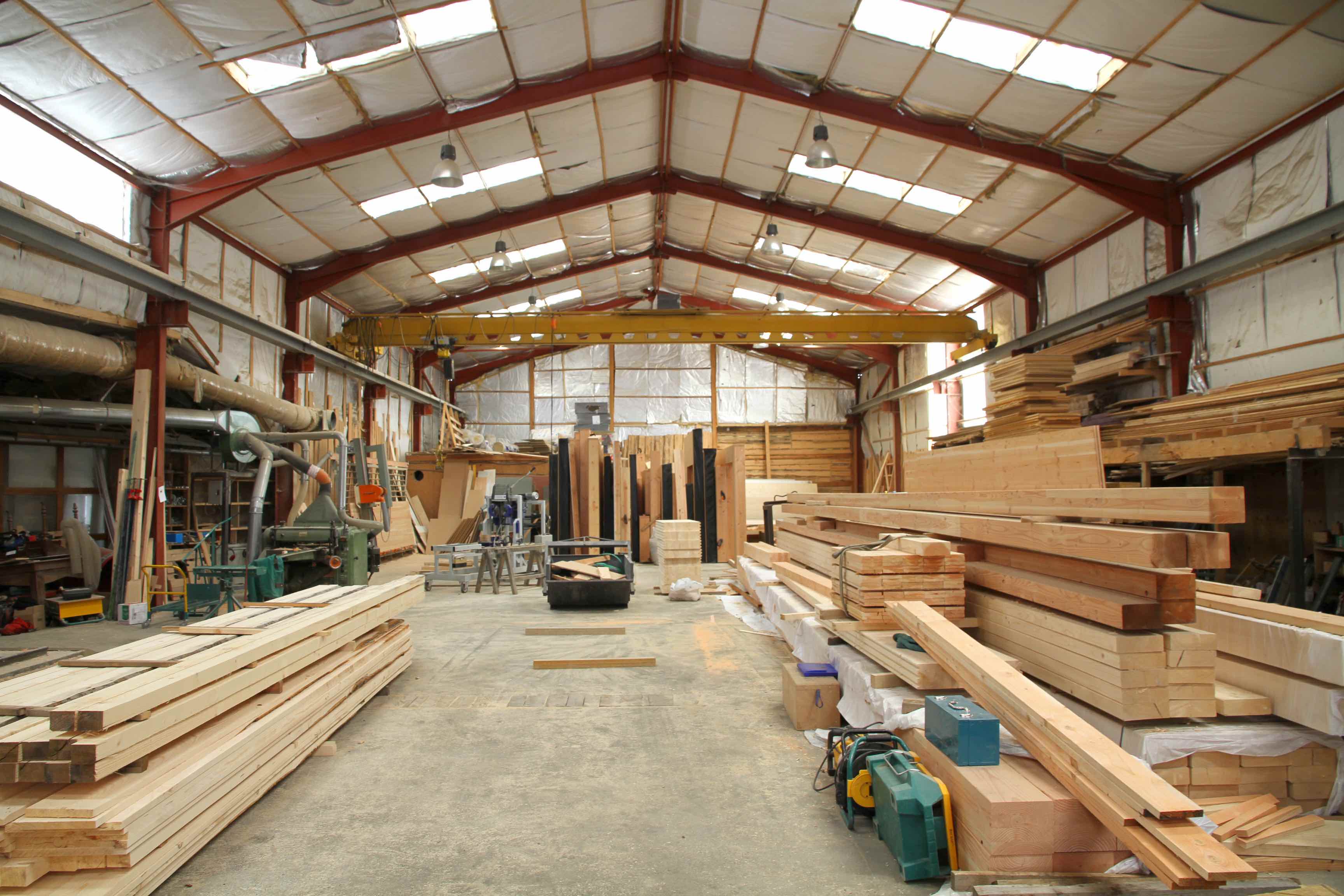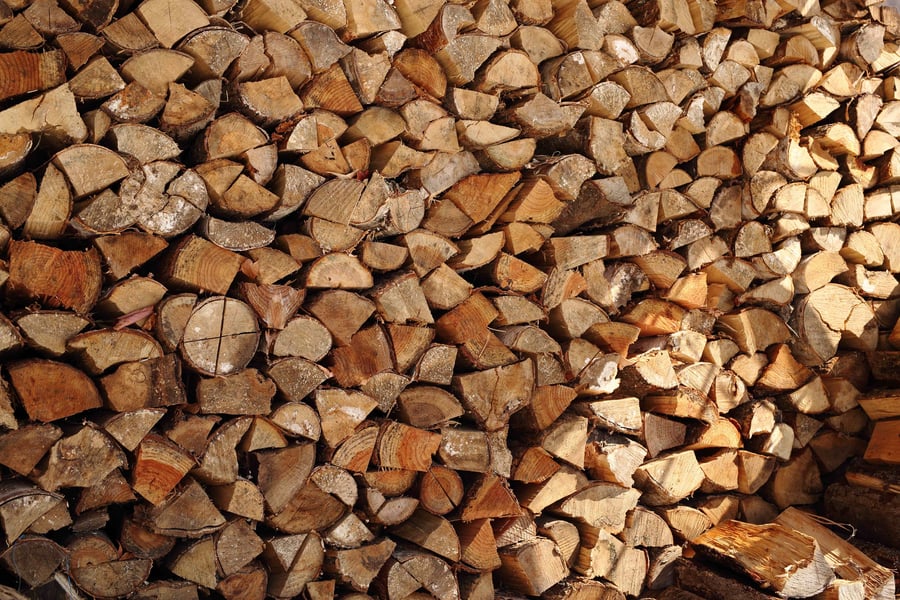Practical Uses For Moisture Meters For Quality Improvement in Wood Manufacturing RX # 5

Rx #5: MONITORING MC IN PRODUCTION
There should be no doubt that the moisture content (MC) of the wood used in manufacturing of furniture, cabinets, flooring, and so on is super critical for producing products that perform well in service. As stated in Rx #1, the MC of lumber, of parts and of the final product should match the expected MC of the product when it is put into use.
Getting the correct MC means proper kiln drying (KD), proper storage after KD, proper MC when processing of the lumber begins, proper MC during manufacturing, and proper MC in storage and shipment.
There are three important elements of monitoring MC in production:
- Knowing the correct target MC to within 0.2% MC (and not just “6 to 8% MC” which is too general to be useful). SPECIAL NOTE: If indeed we manufacture furniture, cabinets, etc. that is designed to be used between 30% RH and 50% RH (6.0% to 9.0% MC), we should include a written notice to that effect when the product is shipped. If we don’t tell the consumer or installer, who will?
2) Maintaining plant EMC as close as possible to the target EMC. (See Rx #1 for EMC definition and relationship to relative humidity.) A handheld RH meter that can be carried around to check humidity in various locations in the plant is Delmhorst HT-4000F. This meter can also be used to check other sensors in the plant. Due to wood dust issues and aging, most cheap sensors (under $100) lose their calibration within a year or less.
3) Measuring the MC while manufacturing. As a general rule, wood can tolerate a 1% swing in MC without serious problems, especially if the change is a gain in MC. If the change is done slowly over several months, like the change from summer to winter, a 2%MC change will seldom cause any problems. So, it is important to measure the MC of wood pieces during manufacturing to make sure that they are still correct. This is most often done with a pinless meter.
When doing these checks during manufacturing, we are looking for any prior errors in measuring MC or for changes in MC during prior manufacturing. Essentially, we have MC checks that tell us “Continue” or “Stop.” Here is the basic question “Why put time and money into wood at the wrong MC and that will likely result in future problems?”
One good test for moisture issues is to look at the top piece of wood in a stack for warp. We assume that initially the panel or other product was flat, so warp means a MC change- -100% certainty. The top surface of the warped piece lost or gained moisture when exposed to the plant’s EMC, and then shrank (lost MC) or swelled (gained MC). However, the core and reverse side were not exposed to the plant’s EMC, so they do not change MC. To prove this, we can use a moisture meter with short pins that are pushed about 1/16” into the top surface and then into the bottom surfaces. Differences in MC, top to bottom, will cause warp.
Appreciate that there will be natural variation in MC. For example, if the target is 7.0% MC and we hit that target, we will find over 2/3 of the measured values will be between 6.7% MC and 7.3% MC. This is normal variation for a very good drying operation.
So, in the plant during manufacturing, the pin meter should be used to make sure that no readings are over 7.9% MC, if the target is 7.0% MC. Actually, maybe 2 out of 100 could be 8.0% MC, but no wetter. If we know that there are no samples wetter than this, we can be fairly certain that we will not have a MC issue in the future (unless the customer has exceptionally dry or wet conditions).
To monitor the in-plant MC, we need to take three readings once an hour at a particular manufacturing station. If two or three of these readings are over 7.6% MC (when the target is 7.0% MC), then we have a strong suspicion that the lumber either was wetter than we thought or it has picked up MC in the manufacturing process. Subsequently, using insulated needles to see the MC at different depths will confirm if it is wet lumber (the core MC will be high with wet lumber) or if the wood is picking up moisture in manufacturing (if the surface will be wetter than the core).
QC people could use the three MC readings every hour in a more sophisticated program to study long term trends in the average MC and the variations. They can also relate defects in the field to the MC at the time of manufacturing. One powerful tool they have is to make a graph of MC (vertical axis) and time (horizontal axis). The MC on this graph is the average MC of the three samples. As we know, a picture is worth a 1000 words.
SPECIAL NOTE #1: Wrapping a finished product in plastic or encapsulating in a plastic bag will assure that the MC will not change for a year or more- -that is, no moisture can get into or out of the bag. Because heat alone does not cause wood to shrink, swell, warp, or crack, we are concerned only about the relative humidity.
SPECIAL NOTE #2: It is possible to test the performance of a wood product when it will be used in a abnormally drier or abnormally more humid environment. We can build a very small room with a safe heater and humidifier or dehumidifier and create a different humidity or EMC environment than the plant’s. Add heat to 95 F; heat allows any serious problems to show up in a few days.
Rx is from The Wood Doctor, Gene Wengert, President, The Wood Doctor’s Rx LLC
Subscribe to Our Blog
Post Related

Practical Uses For Moisture Meters For Quality Improvement in Wood Manufacturing RX # 2

